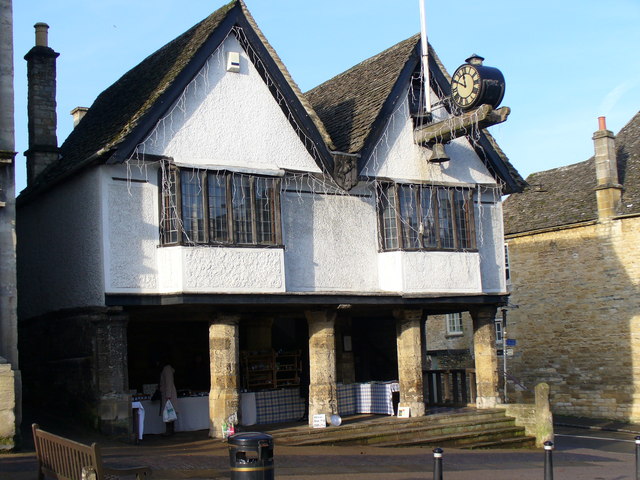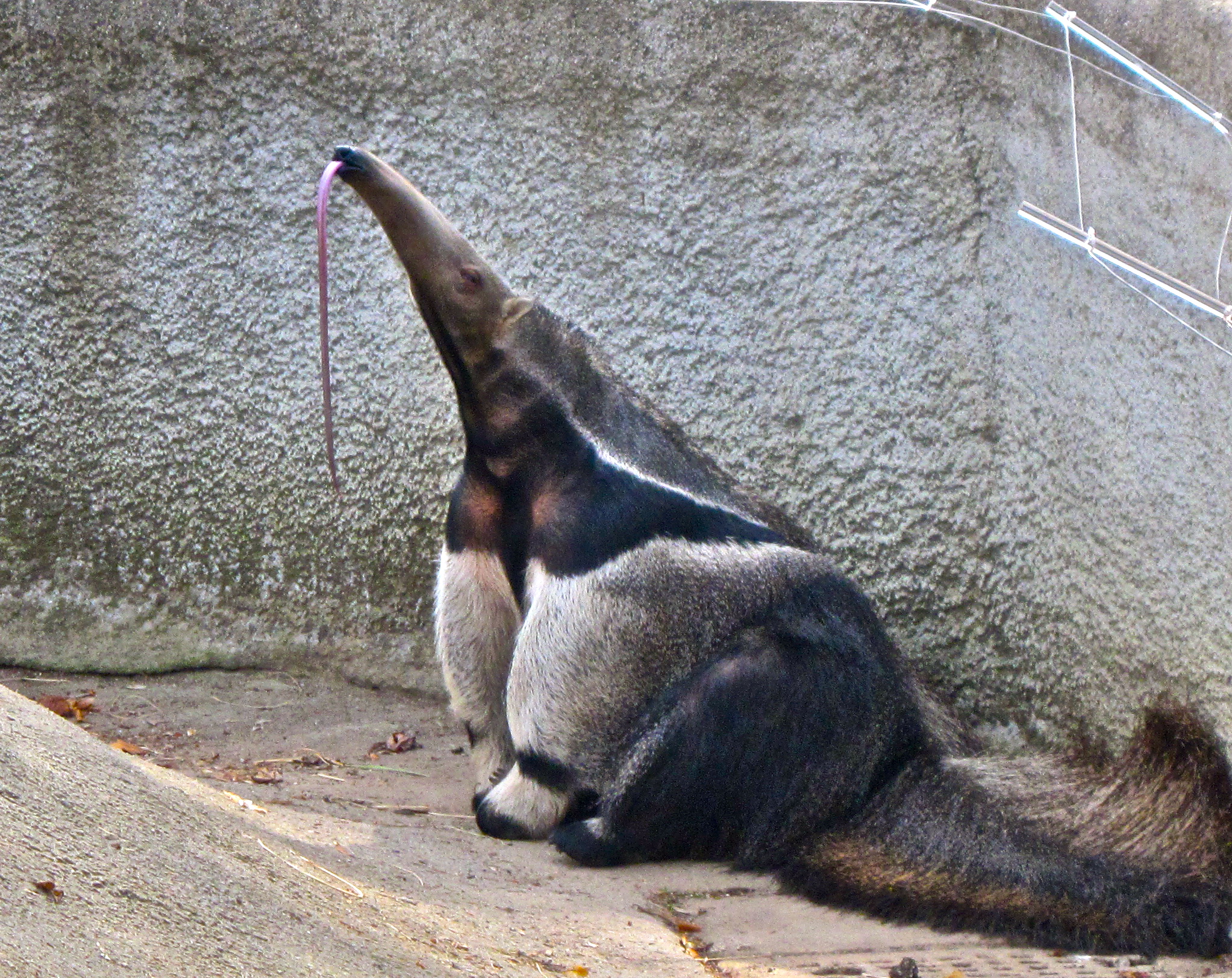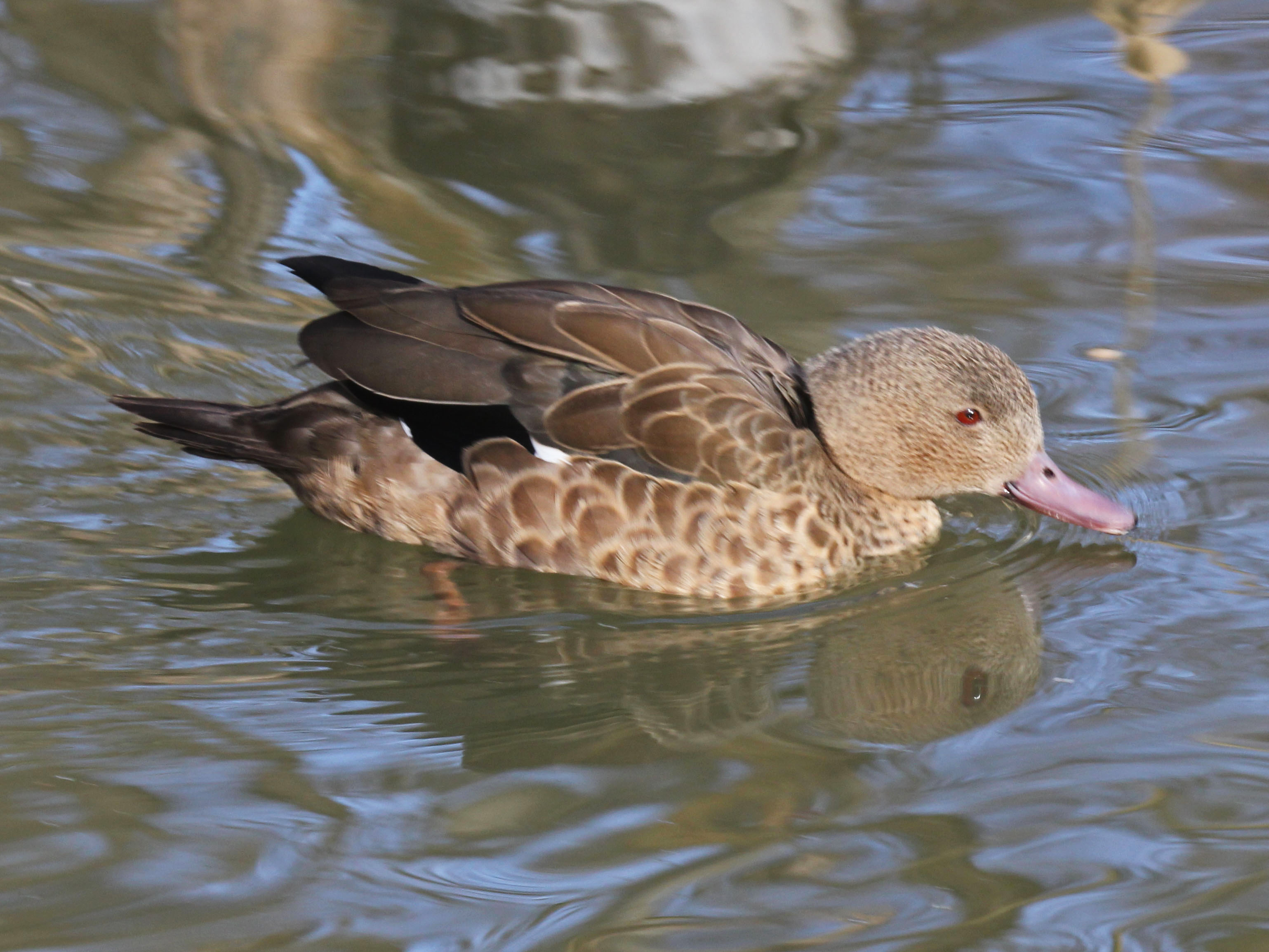|
Cotswold Wildlife Park
The Cotswold Wildlife Park & Gardens exhibits over 260 different species of animals. The park is set in of landscaped parkland and gardens 2 miles south of Burford, on the A361, Oxfordshire, England. Around 350,000 people visited the park in 2012. Animal exhibits *Walled Garden houses aviaries, including a Humboldt penguin enclosure and a Tropical House with exotic plants and free-roaming sloths, and tropical birds such as great blue turacos, Bali starlings and bleeding heart pigeons. Penguin feeding and talk is held daily at 11 am and 3 pm. Mammals in the Walled Garden include meerkats, yellow mongooses, prairie dogs and a breeding group of Oriental small-clawed otters. There is also a collection of small primates, including squirrel monkeys, pygmy marmosets, red-handed tamarins and emperor tamarins. *Madagascar, opened in 2008, is a walk-through exhibit which draws attention to the plight of endangered lemur species. The mixed exhibit features ring-tailed lemurs, collared ... [...More Info...] [...Related Items...] OR: [Wikipedia] [Google] [Baidu] |
Burford
Burford () is a town on the River Windrush, in the Cotswolds, Cotswold hills, in the West Oxfordshire district of Oxfordshire, England. It is often referred to as the 'gateway' to the Cotswolds. Burford is located west of Oxford and southeast of Cheltenham, about from the Gloucestershire boundary. The Toponymy, toponym derives from the Old English words ''burh'' meaning fortified town or hilltown and ''ford (crossing), ford'', the crossing of a river. The United Kingdom Census 2011, 2011 Census recorded the population of Burford parish as 1,422. Economic and social history The town began in the History of Anglo-Saxon England, middle Saxon period with the founding of a village near the site of the modern priory building. This settlement continued in use until just after the Norman conquest of England when the new town of Burford was built. On the site of the old village a hospital was founded which remained open until the Dissolution of the Monasteries by Henry VIII of Englan ... [...More Info...] [...Related Items...] OR: [Wikipedia] [Google] [Baidu] |
Red-handed Tamarin
The golden-handed tamarin (''Saguinus midas''), also known as the red-handed tamarin or Midas tamarin, is a New World monkey belonging to the family Callitrichidae. Distribution and habitat This species is native to wooded areas north of the Amazon River in Brazil, Guyana, French Guiana, Suriname, and possibly Venezuela. A population of tamarins south of the Amazon River that lack the contrasting feet and hands was previously believed to be a sub-population of golden-handed tamarins but is now treated as a separate species, the black tamarin. Populations of golden-handed tamarins appear to be expanding into the historical range of the pied tamarin, with the golden-handed tamarin gradually displacing the pied tamarin through interspecific competition. This species prefers trees with small crowns. Description The golden-handed tamarin's body measures ; including the tail it measures . It weighs . The fur of the golden-handed tamarin is dark brown or black, with contrasting gold ... [...More Info...] [...Related Items...] OR: [Wikipedia] [Google] [Baidu] |
Giant Anteater
The giant anteater (''Myrmecophaga tridactyla'') is an insectivorous mammal native to Central and South America. It is one of four living species of anteaters, of which it is the largest member. The only extant member of the genus ''Myrmecophaga'', it is classified with sloths in the order Pilosa. This species is mostly terrestrial, in contrast to other living anteaters and sloths, which are arboreal or semiarboreal. The giant anteater is in length, with weights of for males and for females. It is recognizable by its elongated snout, bushy tail, long fore claws, and distinctively colored pelage. The giant anteater is found in multiple habitats, including grassland and rainforest. It forages in open areas and rests in more forested habitats. It feeds primarily on ants and termites, using its fore claws to dig them up and its long, sticky tongue to collect them. Though giant anteaters live in overlapping home ranges, they are mostly solitary except during mother-offspring rel ... [...More Info...] [...Related Items...] OR: [Wikipedia] [Google] [Baidu] |
Patagonian Mara
The Patagonian mara (''Dolichotis patagonum'') is a relatively large rodent in the mara genus ''Dolichotis''. It is also known as the Patagonian cavy, Patagonian hare, or dillaby. This herbivorous, somewhat rabbit-like animal is found in open and semiopen habitats in Argentina, including large parts of Patagonia. A population has also been recorded in the northern United Arab Emirates, possibly as a result of escaped pets or captive animals. It is monogamous, but often breeds in warrens shared by several pairs. Description The Patagonian mara resembles a jackrabbit. It has distinctive long ears and long limbs. Its hind limbs are longer and more muscular than its fore limbs and it has a longer radius than humerus.Campos. C. M., Tognelli. M. F., Ojeda. R. A., (2001) Dolichotis patagonu, ''Mammalian Species'', 625:1-5 The feet are compressed, making them hoof-like. The fore feet have four digits while the hind feet have three digits. Its tail is short, depressed, and hairless. It h ... [...More Info...] [...Related Items...] OR: [Wikipedia] [Google] [Baidu] |
Capybara
The capybaraAlso called capivara (in Brazil), capiguara (in Bolivia), chigüire, chigüiro, or fercho (in Colombia and Venezuela), carpincho (in Argentina, Paraguay and Uruguay) and ronsoco (in Peru). or greater capybara (''Hydrochoerus hydrochaeris'') is a giant cavy rodent native to South America. It is the largest living rodent and a member of the genus ''Hydrochoerus''. The only other extant member is the lesser capybara (''Hydrochoerus isthmius''). Its close relatives include guinea pigs and rock cavies, and it is more distantly related to the agouti, the chinchilla, and the nutria. The capybara inhabits savannas and dense forests, and lives near bodies of water. It is a highly social species and can be found in groups as large as 100 individuals, but usually live in groups of 10–20 individuals. The capybara is hunted for its meat and hide and also for grease from its thick fatty skin. It is not considered a threatened species. Etymology Its common name is derived fro ... [...More Info...] [...Related Items...] OR: [Wikipedia] [Google] [Baidu] |
Brazilian Tapir
The South American tapir (''Tapirus terrestris''), also commonly called the Brazilian tapir (from the Tupi ''tapi'ira''), the Amazonian tapir, the maned tapir, the lowland tapir, the ''anta'' (Portuguese), and ''la sachavaca'' (literally "bushcow", in mixed Quechua and Spanish), is one of the four recognized species in the tapir family (of the order '' Perissodactyla'', with the mountain tapir, the Malayan tapir, and the Baird's tapir). It is the largest surviving native terrestrial mammal in the Amazon. Most classification taxons also include ''Tapirus kabomani'' (also known as the little black tapir or kabomani tapir) as also belonging to the species ''Tapirus terrestris'' (Brazilian tapir), despite its questionable existence and the overall lack of information on its habits and distribution. The specific epithet derives from ''arabo kabomani'', the word for tapir in the local Paumarí language. The formal description of this tapir did not suggest a common name for the species. ... [...More Info...] [...Related Items...] OR: [Wikipedia] [Google] [Baidu] |
South America
South America is a continent entirely in the Western Hemisphere and mostly in the Southern Hemisphere, with a relatively small portion in the Northern Hemisphere at the northern tip of the continent. It can also be described as the southern subregion of a single continent called America. South America is bordered on the west by the Pacific Ocean and on the north and east by the Atlantic Ocean; North America and the Caribbean Sea lie to the northwest. The continent generally includes twelve sovereign states: Argentina, Bolivia, Brazil, Chile, Colombia, Ecuador, Guyana, Paraguay, Peru, Suriname, Uruguay, and Venezuela; two dependent territories: the Falkland Islands and South Georgia and the South Sandwich Islands; and one internal territory: French Guiana. In addition, the ABC islands of the Kingdom of the Netherlands, Ascension Island (dependency of Saint Helena, Ascension and Tristan da Cunha, a British Overseas Territory), Bouvet Island ( dependency of Norway), Pa ... [...More Info...] [...Related Items...] OR: [Wikipedia] [Google] [Baidu] |
Red-bellied Lemur
The red-bellied lemur (''Eulemur rubriventer'') is a medium-sized strepsirrhine primate with a luxuriant chestnut brown coat. This lemur is endemic to eastern Madagascan rainforests and is distinguished by patches of white skin below the eyes, giving rise to a "teardrop" effect, particularly conspicuous in the male. The species, first identified in 1850, exhibits diurnal behaviour and marked sexual dimorphism. The red-bellied lemur has been studied extensively since the mid-1980s, primarily in Ranomafana National Park. This lemur species is designated as vulnerable according to the IUCN Red List, due to threats endangering habitats from slash-and-burn agriculture in Madagascar. Etymology The various Malagasy names for the red-bellied lemur include , , , , and . In the French scientific literature (Madagascar's second official language is French, due to prior colonisation by France), the species is called . Description Being sexually dimorphic, the male of the species ... [...More Info...] [...Related Items...] OR: [Wikipedia] [Google] [Baidu] |
Radiated Tortoise
The radiated tortoise (''Astrochelys radiata'') is a tortoise species in the family Testudinidae. Although this species is native to and most abundant in southern Madagascar, it can also be found in the rest of this island, and has been introduced to the islands of Réunion and Mauritius. It is a very long-lived species, with recorded lifespans of up to 188 years. These tortoises are classified as critically endangered by the IUCN, mainly because of the destruction of their habitat and because of poaching. Description Growing to a carapace length of up to 16 in (41 cm) and weighing up to 35 lb (16 kg), the radiated tortoise is considered to be one of the world's most beautiful tortoises. This tortoise has the basic "tortoise" body shape, which consists of the high-domed carapace, a blunt head, and elephantine feet. The legs, feet, and head are yellow except for a variably sized black patch on top of the head. The carapace of the radiated tortoise is bri ... [...More Info...] [...Related Items...] OR: [Wikipedia] [Google] [Baidu] |
Madagascar Teal
Bernier's teal (''Anas bernieri''), also known as the Madagascar teal, is a species of duck in the genus ''Anas''. It is endemic to Madagascar, where it is found only along the west coast. Part of the "grey teal" complex found throughout Australasia, it is most closely related to the Andaman teal. Taxonomy The Bernier's teal was first described by the German ornithologist Gustav Hartlaub in 1860 under the binomial name ''Querquedula bernieri''. It is one of many dabbling ducks in the genus ''Anas''. It is one of the "grey teals", a group of related ducks found across Australasia. DNA studies suggest that it may have been a sister species with Sauzier's teal (which was found on the nearby islands of Mauritius and Réunion until it became extinct). Studies further suggest that its closest living relative is the Andaman teal, and confirm that it is related to the gray teal. There are no subspecies. The duck's common and species names both commemorate Chevalier Bernier, a Frenc ... [...More Info...] [...Related Items...] OR: [Wikipedia] [Google] [Baidu] |
Crowned Sifaka
The crowned sifaka (''Propithecus coronatus'') is a sifaka endemic to western Madagascar, a part of the world where nature and its biological diversity faces enormous and devastating consequences resulting from anthropogenic activities. It is a species of lemur belonging to the Idriidae family, it is of comparable size to the Golden-crowned sifaka and up to a meter in length, of which 47-57 centimeters are tail. The species is an arboreal vertical climber and leaper whose diet consists of leaves, fruits and flowers. It is threatened by habitat destruction caused by human activities and is currently classified as critically endangered by the IUCN. Conservation planning needs to take local people needs and views into account in order to be successful over the long term. Taxonomy The crowned sifaka was formerly believed to be a subspecies of either Verreaux's sifaka or Von der Decken's sifaka, but is now considered a valid species following a 2007 analysis of the cranium. Melanistic ... [...More Info...] [...Related Items...] OR: [Wikipedia] [Google] [Baidu] |
Mongoose Lemur
The mongoose lemur (''Eulemur mongoz'') is a small primate in the family Lemuridae, native to Madagascar and introduced to the Comoros Islands. These arboreal animals have pointed faces, long, bushy tails, dark-brown upper parts, pale bellies, and beards, which are reddish in males and white in females. They live in family groups and feed primarily on fruit, but also eat leaves, flowers, and nectar, with nectar from the kapok tree making up a large part of their diet during the dry season. They have declined sharply in numbers because of habitat destruction and hunting, and the International Union for Conservation of Nature has rated their conservation status as " critically endangered". Description The mongoose lemur ranges in size from long plus a tail of . Both sexes are born with white beards, but become obviously dimorphic around six weeks of age when the males develop red beards and red cheeks. The males also have lighter faces than the females. Males may further distingu ... [...More Info...] [...Related Items...] OR: [Wikipedia] [Google] [Baidu] |
.jpg)









